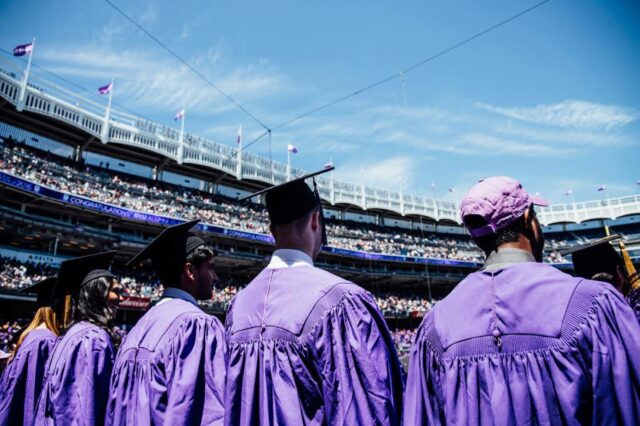By Emma Spalti
As many of Wagnerds are familiar with student loans and becoming more familiar all the time, it’s good to know what’s new on the issue. And when hundreds of NYU students cross the stage at May graduation, (and hope that their future careers aren’t dependent on no-longer-dependable government grants,) they should know what groundbreaking student debt policies are being pitched. What innovative solutions are getting traction? So, what is new on the issue? Sadly, nothing.
For his solution to the student debt crisis, President Donald Trump is rehashing a tired idea done time and time again, income-based repayment leading to loan forgiveness. Sounds great, except it doesn’t address a root cause of the swelling national student debt: many in debt aren’t making regular payments. According to the Federal Reserve, “Nearly half of borrowers are not yet repaying. 17% of the borrowers are in default or delinquency. Only 37% of borrowers are current on their loan and actively paying down.†So many struggle to make monthly payments, and the Trump proposal won’t truly help that situation.
Donald Trump’s student debt plan will allow students to pay 12.5% of their income with loan forgiveness after 15 years. His income-based repayment plan would be the fifth of its kind. The most recent reboot debuted in late 2015, offering payments of only 10% of disposable income, and loan forgiveness after 20 years. The 2015 plan provides cheaper monthly payments than Trump’s proposal, and that’s what struggling former students need right now. If a student can’t afford a $100 payment now, a $125 payment won’t be any more attainable.
And maybe for some, this help is better than no help. Loan forgiveness after 15 years of on-time payments would likely be a boon to many with debt. However, if they defaulted, (like the one of the one million former students who defaults on their student loans every year,) they won’t qualify. Maybe they’re in the most common default situation: they couldn’t afford to stay in school, but had taken out small loans, and now can’t afford their payments. In fact, small borrowers, (typically indicative of dropping out,) are the most likely to default. “34 percent of borrowers owing between $1,000 and $5,000 defaulted by the end of 2014, compared to 18 percent of borrowers owing more than $100,000 who defaulted on their loans.†Right now, default disqualifies a payee from entering the four current income-based plans, and it’s very likely that President Trump’s plan would follow the same rules.
So to get into the new plan, the student must first get out of default. On the federal aid website, the first recommended solution to escaping default is to pay off the debt entirely. After that less than reasonable suggestion, the second option is to consolidate the loans, which the payee can only do after making three months of payments they already can’t afford. The third option to escape default is to the make payments they again, can’t afford but this time for nine months. Then, they’ll be eligible for the new plan which is more expensive on a month-to-month basis than its year-old predecessor.
I don’t doubt that this plan will offer some relief. Countless former students would leap at the chance to be debt free in 15 years. But Trump’s plan ignores the existing crushing debt burden for those who struggle the most. A plan with higher monthly payments won’t help the most desperate to begin managing their debt. And soon, some of us may be in that number. Remember that figure from earlier? “18 percent of borrowers owing more than $100,000 who defaulted on their loans.†Students with debt sizes that large, are typically graduate students. They’re our classmates and peers who one day may need a better policy than this trite attempt offers.
In fact, the latest generation of income-based repayment plans debuted in 1993 under President Clinton. If this were a truly effective policy, surely it would have demonstrated that effectiveness in twenty-three years. We need something new. We need to give those in default the ability to enter into reduced-payment plans without the current hurdles. By assisting those in the direst situations, we can reduce the national debt load and get more people in repayment. We also need colleges and universities to receive incentives for graduating students, not just enrolling them, burdening them with debt, and standing by as their students drop out. The current proposal won’t meet these needs. We need strong, fresh, needs-based policy to address the issue that so many of us face.




